Wing Chun Hand & Arm Technique Glossary
Introduction to Wing Chun Terms
The art of Wing Chun stands apart in the martial arts world not just because of its efficiency and practicality, but also because of its unique language—an assemblage of Cantonese terms, precise hand shapes, and principle-based arm movements that define its core practice. This glossary is meticulously curated to help martial artists, enthusiasts, and online students decode and internalize the language of Wing Chun. Here, each definition is more than a translation—it’s an entry point into the living tradition and deeper technical understanding of an authentic Chinese martial system.
Why is a glossary of Wing Chun hand and arm techniques essential? For any practitioner, especially those learning in a self-guided or online format, clarity and consistency of terminology are critical. Moves such as Tan Sao, Bong Sao, and Fook Sao are not just labels; they encapsulate entire concepts, historical theory, and honed combat strategies passed down from generations of masters. Understanding these terms solidifies the foundation of skill development, enables meaningful participation in global discussions on forums or seminars, and grants precision when following instructional videos or online training modules.
Furthermore, this glossary serves as a bridge—connecting newcomers and experienced martial artists alike to the profound lineage, cultural richness, and scientific logic embedded in Wing Chun’s hand and arm techniques. Each term, when deeply understood, enhances physical training, supports self-reflection, and contributes to safer, more effective practice. For instructors and course creators, using unified language ensures all students receive the same high standard of teaching, regardless of their location or background.
The list below focuses on the system’s most frequently used hand and arm techniques, providing details not just in definition, but in real-world function, critical structure points, usage tips, and training insights. These explanations are designed to prevent misunderstandings and thin content, giving each entry depth and practical context. Whether seeking to pass a certification, prepare for a grading, or simply deepen understanding, the glossary is your companion on the journey to Wing Chun excellence.
Explore each term and revisit the glossary often—Wing Chun’s language evolves through practice and discussion, and mastery always begins with knowing the core terms by heart. This glossary is continually refined to integrate historical insights, updated examples, and multimedia demonstrations, fostering a truly immersive learning experience both for lifelong practitioners and those new to the path.
Why Deepen Your Understanding of Wing Chun Terms?
It cannot be overstated how crucial it is to truly grasp the vocabulary that underpins Wing Chun practice. These terms are not mere jargon. Each technique—Tan Sao, Bong Sao, Pak Sao, Lop Sao, and others—encodes years of practical experimentation, nuanced body dynamics, and a strategic mindset that reflects both the science and artistry of Chinese martial arts. By learning these terms and their proper application, practitioners unlock not only technical improvement but also insight into the philosophy of efficiency, directness, and adaptation for which Wing Chun is renowned.
For online course students, structured glossaries mean never being lost in translation—whether navigating video tutorials, step-by-step routines, or interactive quizzes. For instructors, this shared lexicon allows for scalable, repeatable, and reliable teaching across different learners, cultures, and even languages. As a living document, the glossary grows with the art itself, incorporating practitioner feedback, refining definitions, and adjusting for new methodologies as the community expands.
The terms curated in this glossary are selected specifically for their high frequency in live classes, exams, and self-practice. They represent the “spine” of Wing Chun’s empty hand curriculum. The patterns, energies, and tactical questions encapsulated by each term provide a structure for mastering everything from the most basic block to the most advanced redirection or trapping maneuver—and this depth is reflected in the explanations you’ll find here.
Investing time in studying this glossary is investing in martial arts literacy—a skill as vital as physical conditioning. Terms become stepping stones, building a mental framework that enhances learning speed, retention, and overall martial fluency. In combat, the practitioner’s mind should not be divided between “what to do” and “what it’s called”—clarity of technique and clarity of terminology go hand in hand.
Tan Sao (Dispersing Arm)

Tan Sao, often translated as "Dispersing Hand" or "Palm Up Hand," is a fundamental technique in Wing Chun kung fu. It serves as both a defensive and offensive movement, designed to efficiently deflect incoming attacks while simultaneously creating opportunities for counterstrikes. The Tan Sao is characterized by a palm-up position with the arm extended forward, forming a triangular structure that disperses the opponent's energy away from the practitioner's centerline.The effectiveness of Tan Sao lies in its dynamic nature.
Rather than being a static block, it's an active movement that spirals forward, drilling and corkscrewing towards the opponent's centerline. This forward intention allows the practitioner to deflect attacks along the radial line (roughly following the direction of the index finger) while maintaining a strong structure. The technique is often used in conjunction with simultaneous attacks, embodying Wing Chun's principle of economy of motion.Proper execution of Tan Sao requires attention to several key points.
The elbow should remain close to the body, with the shoulder kept low to maintain structural integrity. The angle of the forearm is crucial, ideally positioned at about 135 degrees between horizontal and vertical to provide optimal mechanical advantage. When performed correctly, Tan Sao can absorb and redirect even powerful strikes, using the opponent's force to reinforce the practitioner's connection to the ground. This technique is extensively practiced in Chi Sao (sticky hands) exercises and forms an essential component of Wing Chun's defensive arsenal. Courses like the Wing Chun Online Certification Course teach these fundamental principles.
Bon Sao (Wing Arm)
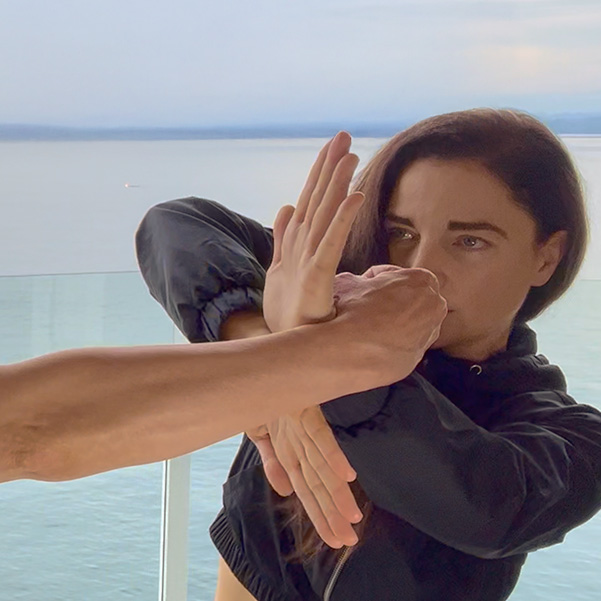
Bong (Bon) Sao, often translated as "Wing Arm," is a fundamental technique in Wing Chun kung fu that serves both defensive and offensive purposes. Characterized by rolling the forearm outward and raising the elbow, Bong Sao appears in multiple Wing Chun forms, including Sil Lim Tao and Chum Kiu. This technique is designed to efficiently deflect incoming attacks while simultaneously creating opportunities for counterstrikes. The effectiveness of Bong Sao lies in its dynamic nature, as it's not a static position but rather a temporary shape used to transition into more offensive or defensive positions.
The application of Bong Sao is versatile and crucial to Wing Chun's effectiveness. It's particularly useful as a counter to techniques like Lap Sau, allowing the practitioner to rotate the forearm and raise the elbow when pulled. By occupying both of the opponent's hands, it frees the practitioner's other hand for strikes or defense. In Chi Sau (sticky hands) practice, Bong Sao plays a vital role in both basic rolling and unpredictable attack and defense sequences. However, it's important to note that Bong Sao should not be the first choice of defense but rather a response to a failed punch or other techniques.
Proper execution of Bong Sao requires attention to several key points. The technique should maintain a spiraling or corkscrewing action, with the elbow kept close to the body. It's crucial to understand that Bong Sao is not a static technique and should never lift away from the body. The elbow should remain immovable, providing a strong structure. Sifu Kendra Mahon emphasizes that "Wing Chun cannot exist without Bong Sao," highlighting its importance in dealing with stronger opponents and its unique role as the only Wing Chun technique that doesn't follow the elbow along centerline principle. When performed correctly, Bong Sao embodies Wing Chun's core principles of economy, structure, and fluidity, making it an indispensable tool in both self-defense and combat applications.
Fook (Fuk) Sao (Bridging Arm)
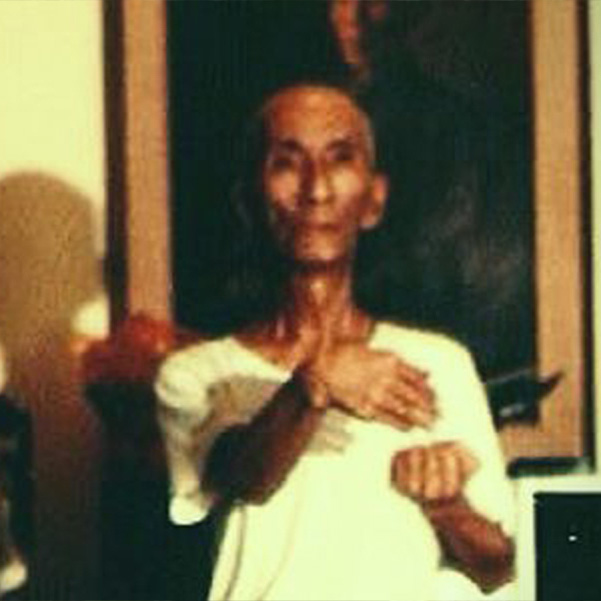
Fook Sao, or the "bridging arm," is a key concept in Wing Chun kung fu, playing an essential role in the system's structure and combat strategy. This technique is primarily used to protect the practitioner while maintaining offensive capabilities. When executing Fook Sao, the forearm is positioned at an angle, typically at about 45 degrees, creating a "bridge" between the practitioner and their opponent. This position allows the practitioner to control the distance, redirect incoming attacks, and set up opportunities for counterstrikes, all while keeping the centerline protected.
The Fook Sao is also a dynamic movement that helps in maintaining balance and stability during a fight. It can be used in various ways, such as when an opponent attempts to strike or push the practitioner off balance. By using the arm to absorb or deflect an attack, the practitioner can simultaneously control the opponent's arm and establish a dominant position. Its usefulness lies in the fact that it isn't just a static defense but a fluid and adaptable movement that integrates well with the other core techniques of Wing Chun, such as Tan Sao and Bong Sao, to create a seamless flow in combat.
Furthermore, Fook Sao plays a vital role in the principle of "sticking hands" or Chi Sao, a training exercise designed to develop sensitivity and reflexes. In Chi Sao, the practitioner learns to respond to the opponent's movements based on the feel or pressure on their arm, and Fook Sao is often employed as a foundational tool in this exercise. It trains the practitioner to "stick" to the opponent's hands while maintaining the ability to bridge any gaps and transition to other techniques. Mastery of Fook Sao, like many Wing Chun movements, requires a deep understanding of timing, positioning, and energy flow, which together enhance the practitioner's overall efficiency and effectiveness in combat.
Pak Sao (Slapping Hand)

Pak Sao, also known as the "slapping hand," is one of the core techniques in Wing Chun kung fu, used primarily for deflecting and neutralizing an opponent's attacks. The motion involves a quick, outward strike of the hand, usually with the palm facing outwards, intended to slap away or redirect an incoming punch or strike. The technique is designed to be fast and direct, relying on the element of surprise and the ability to disrupt the opponent's timing and rhythm. By applying a slapping motion to an attack, Pak Sao creates an opening for the practitioner to either counterattack or move into a more advantageous position, making it an essential tool for both defense and offense.
The beauty of Pak Sao lies in its simplicity and effectiveness in close-quarters combat, where Wing Chun practitioners often find themselves in tight, high-pressure situations. When an opponent throws a punch or strikes, Pak Sao allows the practitioner to deflect the attack without wasting unnecessary movement. The technique's speed is critical, as the force of the incoming strike is redirected with a quick, energetic slap of the hand. The impact of Pak Sao doesn't just disrupt the opponent's attack; it also provides an opportunity for the practitioner to take control of the situation by pushing the opponent's arm away, creating an opening for a counterstrike or to transition to other techniques like the Chain Punch or Elbow Strike.
In addition to its defensive function, Pak Sao is often used as a tool for controlling the opponent's limbs during a confrontation. By executing the slapping motion, the practitioner not only deflects the incoming attack but also forces the opponent's arm into a position where it is vulnerable to further manipulation. This can be particularly effective in scenarios where the opponent is committed to a strong, linear strike, allowing the Wing Chun practitioner to capitalize on the momentum and gain an advantage. Pak Sao also trains the practitioner to develop sensitivity to timing and pressure, as it requires precision and quick reflexes to apply the technique effectively. Through consistent practice, Pak Sao becomes a fluid and instinctual response, enhancing the overall combat skill and adaptability of the practitioner.
Lop Sao (Grabbing Hand)
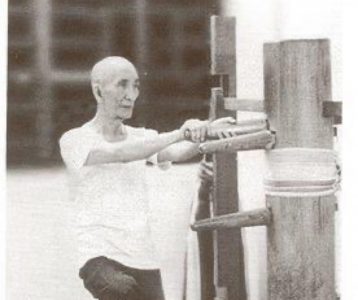
Lop Sao, or the "grabbing hand," is a crucial technique in Wing Chun that focuses on controlling and redirecting the opponent's limbs, especially during close-quarters exchanges. The fundamental purpose of Lop Sao is to seize or "trap" the opponent's arm or wrist, typically after deflecting an incoming strike. The technique is executed by pulling the opponent's arm downward or to the side, using a quick and controlled motion, which disrupts their balance and position. By executing Lop Sao, the practitioner can neutralize the threat of an incoming attack while simultaneously setting up an opportunity for a counterstrike or follow-up technique.
What sets Lop Sao apart from other defensive movements in Wing Chun is its emphasis on maintaining control over the opponent's limb. Once the opponent's arm has been grabbed, the practitioner can either keep it trapped in place or pull it off-balance, making it difficult for the opponent to launch further attacks. This technique is often used in combination with other core movements like Tan Sao, Bong Sao, or Pak Sao, which clear the line of attack or deflect incoming strikes. In this way, Lop Sao works in synergy with the rest of the Wing Chun system, enabling the practitioner to maintain a dominant position while keeping the centerline controlled.
Lop Sao is not only an effective defensive tool but also an essential component of Wing Chun's sensitivity training, particularly in the practice of Chi Sao (sticking hands). Through Chi Sao, practitioners develop a heightened sense of feel and awareness, allowing them to sense when and how to apply Lop Sao in response to an opponent's movements. This "grabbing" motion requires precision, as an overly aggressive or poorly timed attempt can leave the practitioner vulnerable to counterattacks. Mastery of Lop Sao demands a balance of strength, timing, and relaxation, with the goal being to disrupt the opponent's force without overexerting oneself. When applied correctly, Lop Sao provides a seamless transition from defense to offense, enabling the practitioner to control the flow of the fight.
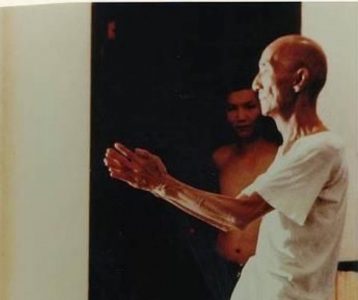
Jum Sao (Sinking Hand)
Jum Sao, often referred to as the "sinking hand" in Wing Chun, is a crucial technique designed to absorb and redirect an opponent's force, particularly when dealing with powerful or downward strikes. Unlike other movements that involve deflecting or pushing away an attack, Jum Sao is more about yielding and guiding the opponent's energy in a controlled manner. The motion involves the practitioner's hand dropping slightly, with the palm facing downward or inward, as the arm sinks into the incoming force. This subtle but effective motion allows the practitioner to maintain balance while dissipating the energy of the strike without needing to overpower it. The hand stays relaxed and fluid, utilizing the body's structure to support the technique, ensuring that the practitioner doesn't become compromised or destabilized by the opponent's power.
One of the defining aspects of Jum Sao is its emphasis on structural integrity and relaxation. By using the sinking motion, the practitioner aligns their body and arm in a way that naturally channels and absorbs the opponent's force, rather than directly opposing it. This creates a strong yet flexible foundation, making Jum Sao particularly effective when dealing with strong, aggressive attacks or when the practitioner needs to maintain control in a tight, pressured situation. The technique also helps prevent unnecessary energy expenditure, a principle central to Wing Chun's efficient combat style. Instead of trying to match strength with strength, Jum Sao encourages the practitioner to sink and deflect, turning the opponent's power into an opportunity for counteraction.
In the broader context of Wing Chun's combat philosophy, Jum Sao is often paired with other techniques like Tan Sao, Fook Sao, or Pak Sao to form a continuous and dynamic flow of defense and attack. In Chi Sao (sticking hands) practice, Jum Sao becomes a critical tool for developing sensitivity to an opponent's intentions and force. The practitioner learns to feel the pressure through their arms and respond accordingly, using the sinking motion to control the opponent's movements without being overwhelmed. Mastery of Jum Sao requires a keen sense of timing and the ability to maintain a relaxed yet grounded stance, allowing the practitioner to remain calm under pressure and respond with fluidity. The technique is a prime example of how Wing Chun emphasizes the use of structure and timing over sheer force, ensuring that the practitioner can effectively deal with a wide range of attacks while maintaining optimal efficiency in combat.
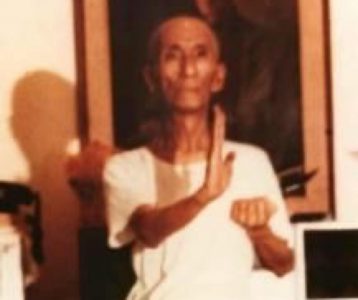
Wu Sao (Protective Hand)
Wu Sao, or the "protective hand," is a key defensive technique in Wing Chun that serves to shield the practitioner's body, particularly the centerline, from incoming attacks. The motion involves the practitioner raising the arm in a relaxed yet firm position, with the palm facing slightly outward and the elbow bent at a natural angle. Wu Sao acts as a barrier, protecting the face, chest, and other vulnerable areas from punches, strikes, or grabs. Its primary function is not to block forcefully, but to redirect or absorb the opponent's attack with minimal effort while maintaining the integrity of the practitioner's structure. By positioning the arm effectively, Wu Sao helps the practitioner stay aligned and prepared for counterattacks, ensuring that their centerline remains safeguarded.
What makes Wu Sao particularly effective is its adaptability in different combat situations. It's often used as a preliminary defensive response when the opponent throws a direct strike or rushes in with a powerful attack. Rather than using brute strength to stop the force, Wu Sao relies on the natural positioning of the hand and forearm to absorb or deflect the incoming pressure, allowing the practitioner to maintain a fluid and relaxed stance. In this way, Wu Sao not only serves as a shield but also as a way to create an opening for offensive actions. Once the opponent's attack is mitigated, the practitioner can quickly transition into another technique, such as a punch, kick, or further defensive maneuver.
In Wing Chun's broader structure, Wu Sao plays a fundamental role in developing proper hand positioning and sensitivity during Chi Sao (sticking hands) practice. During Chi Sao, the practitioner learns to feel the pressure through the arms and respond with the protective hand, using it to neutralize incoming attacks while simultaneously setting up for a counterstrike. Mastery of Wu Sao requires a strong understanding of timing, relaxation, and control. The technique emphasizes Wing Chun's core principle of using minimal effort for maximum effect, ensuring that the practitioner remains calm, efficient, and in control of the fight. With consistent practice, Wu Sao becomes a seamless, instinctual response, allowing the practitioner to defend themselves effectively while maintaining the ability to transition quickly to offence.
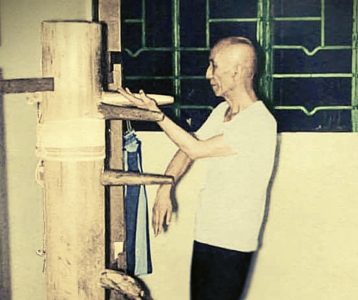
Kwan Sao (Rotating Arms)
Kwan Sao, or the "rotating arms," is a dynamic technique in Wing Chun that focuses on creating circular, rotating movements to control and neutralize an opponent's attacks. The movement of Kwan Sao involves both arms working together in a rotational fashion, with one hand typically performing a sweeping motion while the other may serve as a guard or deflection. This technique is especially effective when the opponent's attack comes from an angle or when a direct block or deflection may not be ideal. The circular motion of the arms allows the practitioner to maintain control over the opponent's limbs while also positioning themselves to strike or move into a better position. Kwan Sao is useful for redirecting and managing the opponent's force, helping to maintain the practitioner's structure while preventing any overextension or compromise in defense.
The strength of Kwan Sao lies in its ability to adapt to various angles of attack, turning what might be an incoming force into an opportunity for control or a counterattack. By rotating the arms, the practitioner can simultaneously deflect, control, or pin an opponent's limbs while keeping their own body in a balanced and strong posture. This technique is especially valuable in close-quarters combat, where quick, fluid movements are essential for maintaining dominance. Kwan Sao also provides a defensive cover for the centerline, which is a critical aspect of Wing Chun's strategy, ensuring that the practitioner remains protected while still able to react swiftly. The rotation of the arms also allows the practitioner to smoothly transition between techniques without losing momentum or breaking the flow of movement.
In Wing Chun's broader system, Kwan Sao is often integrated into Chi Sao (sticking hands) practice, where it helps develop sensitivity and awareness to the pressure and movement of an opponent's hands. Practicing Kwan Sao in Chi Sao allows the practitioner to refine the ability to respond to an opponent's movements with subtle, circular adjustments that preserve their own structure while setting up offensive opportunities. Mastery of Kwan Sao involves the precise coordination of the arms and body, requiring the practitioner to remain relaxed and fluid while executing the rotating motion. The technique helps cultivate a high degree of adaptability, allowing the practitioner to respond to a variety of incoming attacks with ease and confidence, reinforcing the Wing Chun principle of using minimal effort for maximum effect.
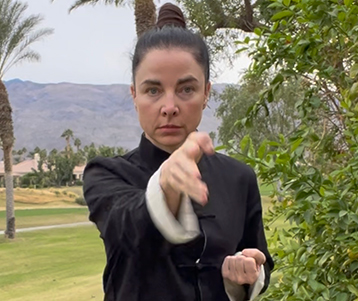
Bil Gee (Biu Gee)
Bil Gee, or the "thrusting fingers," is a powerful and penetrating technique in Wing Chun that focuses on attacking the opponent with a straight, direct thrust of the fingers, often aimed at vital areas such as the eyes, throat, or solar plexus. The thrusting motion is executed with the fingers extended and the hand aligned in a way that maximizes force and precision. Unlike broader or sweeping strikes, Bil Gee is a very focused technique that emphasizes speed, accuracy, and control, allowing the practitioner to deliver a concentrated attack in a very short amount of time. The movement is sharp, linear, and often delivered in rapid succession, making it a highly effective tool for breaking through an opponent's defense, especially when their guard is open or compromised.
The strength of Bil Gee lies in its ability to target weak points with surgical precision. By utilizing the fingers as the main weapon, the technique focuses on exploiting the most vulnerable areas of the opponent's body. The thrusting fingers are designed to penetrate and disrupt the opponent's structure, causing discomfort or injury, while the practitioner's body remains stable and balanced. The motion is rooted in the concept of directness, allowing the practitioner to attack quickly and decisively without telegraphing their intentions. Bil Gee can also serve as a follow-up after a successful block, deflection, or redirection of an opponent's attack, capitalizing on the opening created by previous movements. Its efficiency is a hallmark of Wing Chun's philosophy of minimal effort for maximum effect.
In Wing Chun training, Bil Gee is often practiced as part of the Siu Nim Tau, the first form in the system, where it serves to develop the strength and precision necessary for effective use. The thrusting fingers are taught in conjunction with other techniques like Tan Sao, Fook Sao, or Bong Sao to create a seamless integration of offense and defense. Bil Gee is also incorporated into Chi Sao (sticking hands) practice, where it enhances the practitioner's sensitivity and ability to exploit openings in the opponent's defense. Mastery of Bil Gee requires not only physical precision but also mental focus, as it demands awareness of timing and the ability to recognize vulnerable targets. When performed correctly, Bil Gee is an explosive technique that enables the Wing Chun practitioner to attack with speed and purpose, overwhelming the opponent before they can react.

Chi Sao (Sticky Hands)
Chi Sao, often referred to as "Sticky Hands," is one of the most distinctive and important training methods in Wing Chun kung fu. This exercise involves two practitioners maintaining physical contact through their forearms while performing various offensive and defensive movements. The primary goal of Chi Sao is to develop sensitivity, timing, and reflexes through tactile feedback rather than visual cues. By maintaining constant contact with the opponent's arms, practitioners learn to "feel" their opponent's intentions and react accordingly. This training method emphasizes the Wing Chun principle of simultaneous attack and defense, allowing practitioners to respond to threats while launching counterattacks in the same motion.
The practice of Chi Sao begins with basic rolling exercises where both practitioners maintain contact while their arms move in circular patterns. As proficiency develops, more complex movements and techniques are introduced, including trapping, striking, and controlling movements. Chi Sao training helps practitioners develop what is known as "bridge sensitivity" - the ability to detect changes in pressure, direction, and intention through physical contact. This sensitivity becomes crucial in real combat situations where visual cues may be limited or unreliable. The exercise also develops proper structure, relaxation, and the ability to maintain centerline control while under pressure.
Advanced Chi Sao practice incorporates all the fundamental Wing Chun techniques including Tan Sao, Bong Sao, Fook Sao, and various striking methods. The training progresses from predictable, structured movements to spontaneous, free-flowing exchanges that closely simulate real combat conditions. Chi Sao also teaches practitioners to remain relaxed under pressure, using minimal force to achieve maximum effect. This training method is essential for developing the quick reflexes and instinctive responses that make Wing Chun so effective in close-quarters combat. Through consistent Chi Sao practice, practitioners learn to control distance, timing, and positioning while maintaining constant forward pressure toward the opponent's centerline.

Chain Punch (Lin Wan Kuen)
The Chain Punch, known as "Lin Wan Kuen" in Cantonese, is one of Wing Chun's most recognizable and devastating techniques. This rapid-fire punching method involves delivering a continuous stream of straight punches along the centerline, with each punch following immediately after the previous one in a chain-like sequence. The technique is designed for close-range combat where the practitioner needs to overwhelm an opponent with speed and volume of strikes rather than relying solely on power. Each punch in the chain is relatively light individually, but the cumulative effect of multiple rapid strikes can be devastating, especially when targeting vital areas of the opponent's body.
The effectiveness of the Chain Punch lies in its simplicity and directness. Unlike other martial arts that may use circular or complex striking patterns, the Chain Punch follows Wing Chun's principle of taking the most direct path to the target. The punches are thrown in a straight line along the practitioner's centerline, making them difficult to defend against and allowing for maximum speed and efficiency. The technique also incorporates the Wing Chun principle of forward pressure, with each punch driving forward and creating continuous pressure on the opponent. This makes it extremely difficult for an opponent to mount an effective counterattack or escape from the barrage of strikes.
Training the Chain Punch develops several important Wing Chun attributes including speed, timing, and structural integrity. Practitioners learn to maintain proper form and power throughout the entire sequence, ensuring that each punch is delivered with maximum efficiency. The technique also teaches practitioners to coordinate their entire body, using proper footwork and body mechanics to generate power from the ground up. In sparring and self-defense applications, the Chain Punch can be used to overwhelm an opponent's defenses, create openings for other techniques, or as a finishing combination once an opening has been created. The psychological effect of facing a rapid barrage of punches can also be significant, often causing opponents to panic or freeze, making them more vulnerable to follow-up techniques.
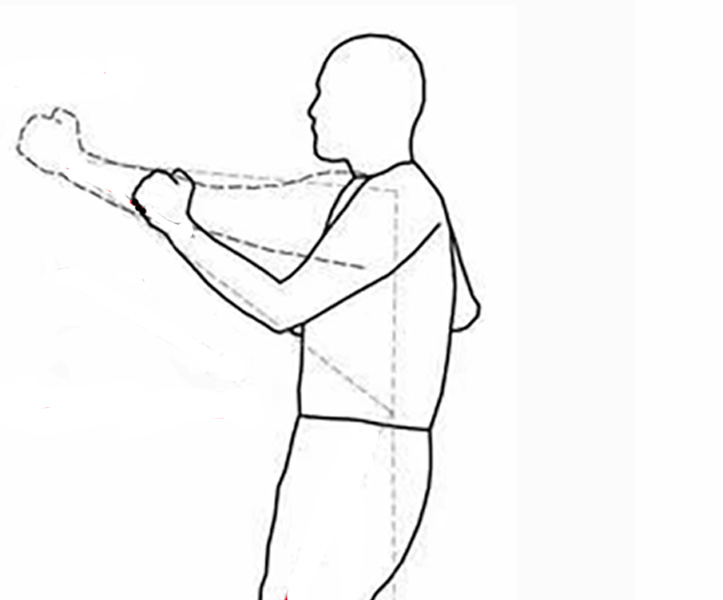
Centerline Theory (Zhong Xian Li Lun)
Centerline Theory is the foundational strategic concept that underlies all of Wing Chun kung fu. This theory is based on an imaginary vertical line that runs through the center of both the practitioner's and the opponent's body, extending from the top of the head down through the torso. The centerline represents the most direct path between two combatants and contains the body's most vital targets including the eyes, nose, throat, solar plexus, and groin. By controlling and attacking along this centerline, Wing Chun practitioners can achieve maximum efficiency in both offense and defense while minimizing their own exposure to counterattacks.
The practical application of Centerline Theory involves positioning oneself to attack the opponent's centerline while simultaneously protecting one's own. This is achieved through proper footwork, positioning, and the use of techniques that naturally funnel along the centerline. Wing Chun techniques are designed to either occupy the centerline (preventing the opponent from attacking it) or to clear the centerline (removing the opponent's defenses to create attacking opportunities). The theory also emphasizes the importance of forward pressure, constantly driving toward the opponent's centerline to maintain offensive initiative and prevent the opponent from establishing their own attacks.
Understanding and applying Centerline Theory requires practitioners to develop a three-dimensional awareness of space and positioning. This includes not only the vertical centerline but also the understanding of how to angle and position the body to create the most advantageous attacking and defending positions. Advanced practitioners learn to manipulate their opponent's centerline through techniques like trapping and controlling, forcing the opponent off their centerline while maintaining control of their own. The theory also extends to multiple opponent scenarios, where practitioners must learn to position themselves to face multiple centerlines while minimizing their own exposure. Mastery of Centerline Theory is what gives Wing Chun its distinctive efficiency and effectiveness in combat situations.
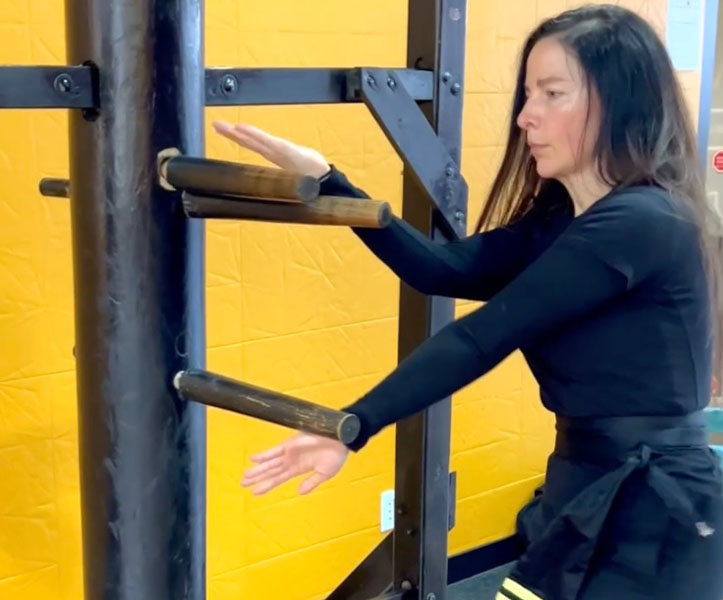
Mook Jong (Wooden Dummy)
The Mook Jong, or Wooden Dummy, is an iconic training apparatus in Wing Chun kung fu that serves as both a conditioning tool and a method for practicing techniques in a structured, repetitive manner. This wooden training device typically features a vertical post with three arms (two upper arms and one lower arm) and a leg, all positioned to simulate the approximate dimensions and reach of a human opponent. The Wooden Dummy form, known as "Mook Jong Kuen," is traditionally the fourth form learned in Wing Chun, coming after the three empty-hand forms: Siu Nim Tau, Chum Kiu, and Bil Jee. The dummy provides practitioners with a consistent, unmoving target that allows them to practice techniques with full force and speed without the risk of injuring a training partner.
Training with the Wooden Dummy offers several unique benefits that cannot be replicated through other training methods. The dummy's wooden construction provides resistance and feedback that helps practitioners develop proper structure, timing, and power generation in their techniques. The arms and leg of the dummy are positioned at specific angles that teach practitioners how to deal with various angles of attack and defense. The form practiced on the dummy incorporates flowing combinations of techniques including strikes, blocks, traps, and footwork, all designed to develop the practitioner's ability to chain techniques together smoothly and effectively. The dummy also serves as an excellent conditioning tool, helping to strengthen the forearms, hands, and body through repeated impact and contact.
The Wooden Dummy form contains many of the advanced concepts and applications found in Wing Chun, including simultaneous attack and defense, trapping and controlling techniques, and complex footwork patterns. Practicing the form helps develop muscle memory, timing, and the ability to maintain proper technique under stress. The dummy also teaches practitioners how to generate power through proper body mechanics and structure rather than relying solely on muscular strength. Advanced practitioners use the dummy not just to practice the traditional form, but also to explore and develop new combinations and applications of Wing Chun techniques. The Wooden Dummy remains one of the most distinctive and important training tools in Wing Chun, representing centuries of accumulated knowledge and wisdom in the art of close-quarters combat.